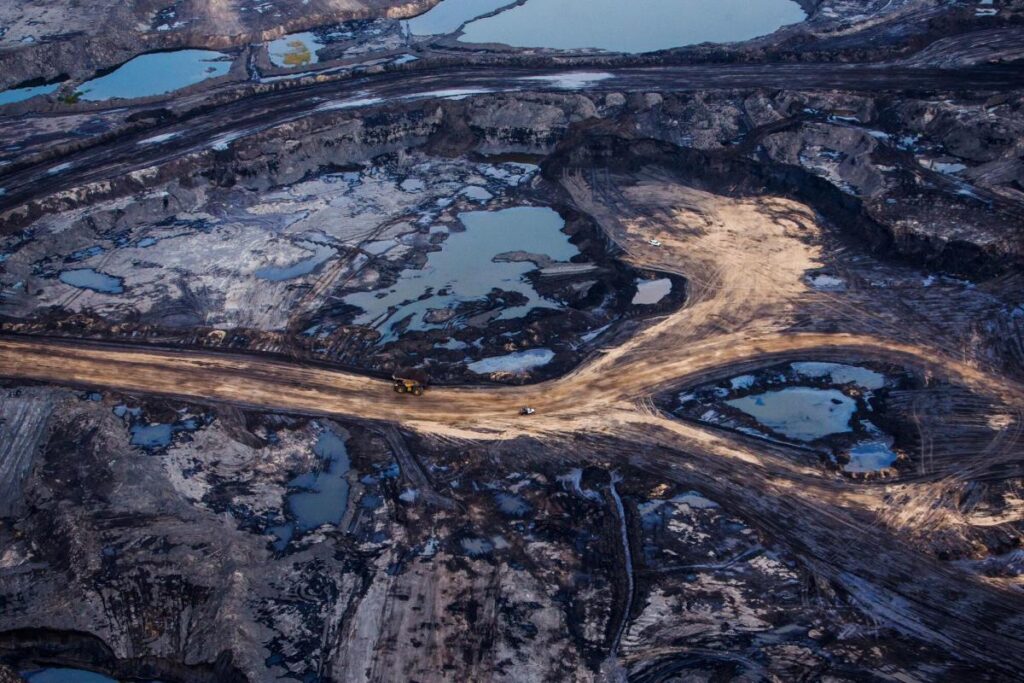(Bloomberg) — Canadian drilling company Strathcona Resources Ltd. plans to spend as much as CAD$2 billion ($1.5 billion) on projects to capture carbon emissions from its oil operations, with support from a Canadian public investment fund.
Most read from Bloomberg
While Strathcona will own and operate the assets, it will split the initial capital costs evenly with the federal Canada Growth Fund and repay the government vehicle with cash flows from carbon credits generated by the system, according to a statement Wednesday. The driller says the project will capture as much as 2 million metric tons of carbon annually.
Adam Waterous, executive chairman of Strathcona, said a successful carbon capture system could take his company’s oil sands production from just under twice as carbon-intensive as the global crude production average to about one-fifth of that benchmark. If deployed more widely by other producers, carbon capture could represent a “dramatic flip of the script” by making Canada’s oil sands — currently a major target of environmentalists — a more desirable source of crude, he said.
“I’m optimistic that community support will follow the carbon intensity data,” Waterous said in an interview. “As carbon intensity goes down, reputation will follow.”
Extracting the thick crude from Canada’s oil sands requires large amounts of steam, making it some of the most carbon-intensive oil in the world. Strathcona’s systems would work by capturing and storing underground the carbon dioxide released when natural gas is burned in the company’s central steam generation facilities.
The opinion of critics
Opponents of carbon capture say that using the technology to produce crude oil does little to combat climate change, since 80 percent or more of oil companies’ emissions come from the combustion of their products by end users. Carbon capture projects around the world also have a mixed record of meeting performance projections.
While Waterous says he’s not comfortable with his company being among the pioneers of the “new and therefore risky” technology, he expects the system to work because Strathcona’s oil production in Saskatchewan and Alberta is in formations suitable for carbon storage.
The Canada Growth Fund will initially commit C$500 million to the projects, with the total potentially rising to as much as C$1 billion. Strathcona said its share of the capital costs will be fully covered by federal tax credits for carbon capture investments and other subsidies. The company expects a final investment decision on the first project in mid-2025, with operations commencing about a year later.
Strathcona has also agreed to guarantee the price of carbon for the partnership, unlike other proposals where companies ask governments to guarantee the carbon price.
While Prime Minister Justin Trudeau’s carbon tax will increase over time, his opponent in Canada’s next federal election — who is leading in the polls — has vowed to eliminate the tax, at least for consumer fuels. It is not yet clear whether the industrial carbon tax, which applies to oil sands projects, will be scrapped or modified under Conservative Leader Pierre Poilievre.
The size of that tax will have a major impact on the value of the credits Strathcona’s system will generate, and will determine the economic viability of the project. Waterous said it’s a risk his company, which pays about C$65 million a year in carbon taxes, was willing to take, and he expects other industry players will eventually echo his sentiment.
“Over time, stored CO2 will become an important social asset, and we believe we will be rewarded economically for that,” he said.
Most read from Bloomberg Businessweek
©2024 Bloomberg LP







